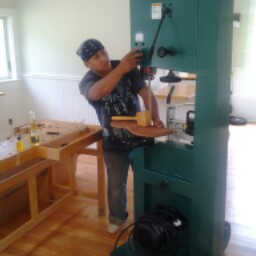Ricardo Espinoza
age ~59
from San Antonio, TX
- Also known as:
-
- Ricardo Espinosa
- Richard M Espinoza
- Richard M Espinosa
- Ricard Espinosa
- Richard E Spinoza
- Espinosa Ricard
- Phone and address:
- 10110 Cedarcliff, San Antonio, TX 78245
Ricardo Espinoza Phones & Addresses
- 10110 Cedarcliff, San Antonio, TX 78245
- Lynnwood, WA
- Austin, TX
- Newark, NJ
Wikipedia References

Ricardo Espinoza
Work:
Position:
Mayor
Vehicle Records
-
Ricardo Espinoza
view source -
Address:10110 Cedarcliff, San Antonio, TX 78245
-
VIN:2B3KA53H47H635993
-
Make:DODGE
-
Model:CHARGER
-
Year:2007
License Records
Ricardo Espinoza
Address:
10110 Cedarcliff, San Antonio, TX 78245
Phone:
(210)3094249
License #:
174074 - Active
Category:
Master Electrician
Expiration Date:
Jun 28, 2017
Name / Title
Company / Classification
Phones & Addresses
Owner
Ricardo Espinoza Jr
Electrical Contractor
Electrical Contractor
10110 Cedarcliff, San Antonio, TX 78245
Us Patents
-
Device Having A Screen Region On A Hinge Coupled Between Other Screen Regions
view source -
US Patent:20190332343, Oct 31, 2019
-
Filed:Jul 8, 2019
-
Appl. No.:16/505641
-
Inventors:- Redmond WA, US
Aaron M. Burns - Newcastle WA, US
Kenneth L. Kiemele - Redmond WA, US
Charlene Mary Jeune - Redmond WA, US
Christian Sadak - Seattle WA, US
John B. Hesketh - Kirkland WA, US
Jeffrey R. Sipko - Kirkland WA, US
Christian Klein - Duvall WA, US
Gregg R. Wygonik - Duvall WA, US
Sophors Khut - Seattle WA, US
Michael R. Thomas - Redmond WA, US
Ricardo Arturo Espinoza Reyes - Redmond WA, US -
International Classification:G06F 3/14
G06F 3/16
G06F 3/0488
G06F 1/16
G06F 3/0346 -
Abstract:Techniques are described herein that are capable of making a state-based determination of information to be displayed on a screen region of a hinge that is coupled to other screen regions. For instance, a state of a hinge that is coupled between a first screen region and a second screen region may be determined. Information that is to be displayed on a third screen region that is provided on the hinge may be determine based at least in part on the state of the hinge.
-
Device Having A Screen Region On A Hinge Coupled Between Other Screen Regions
view source -
US Patent:20180129459, May 10, 2018
-
Filed:Nov 9, 2016
-
Appl. No.:15/347764
-
Inventors:- Redmond WA, US
Aaron M. Burns - Newcastle WA, US
Kenneth L. Kiemele - Redmond WA, US
Charlene Mary Jeune - Redmond WA, US
Christian Sadak - Seattle WA, US
John B. Hesketh - Kirkland WA, US
Jeffrey R. Sipko - Kirkland WA, US
Christian Klein - Duvall WA, US
Gregg R. Wygonik - Duvall WA, US
Sophors Khut - Seattle WA, US
Michael R. Thomas - Redmond WA, US
Ricardo Arturo Espinoza Reyes - Redmond WA, US -
International Classification:G06F 3/14
G06F 1/16
G06F 3/0488
G06F 3/0346 -
Abstract:Techniques are described herein that are capable of making a state-based determination of information to be displayed on a screen region of a hinge that is coupled to other screen regions. For instance, a state of a hinge that is coupled between a first screen region and a second screen region may be determined. Information that is to be displayed on a third screen region that is provided on the hinge may be determine based at least in part on the state of the hinge.
-
Input Based On Interactions With A Physical Hinge
view source -
US Patent:20180113520, Apr 26, 2018
-
Filed:Oct 25, 2016
-
Appl. No.:15/333814
-
Inventors:- Redmond WA, US
Raymond Quan - Seattle WA, US
Ricardo A. Espinoza Reyes - Redmond WA, US
Gregg Robert Wygonik - Duvall WA, US -
Assignee:Microsoft Technology Licensing, LLC - Richmond WA
-
International Classification:G06F 3/0338
G06F 1/16
G06F 3/038
G06F 3/0346 -
Abstract:Techniques for input based on interactions with a physical hinge are described. Generally, a new class of interactions involves user manipulation of a physical hinge in order to provide input to a computing device. These hinge-based interactions provide input to a computing system that can be leveraged to initiate one or more system-level commands or operations, initiate transitions between discrete views of content, interact with content displayed via one or more display devices, and so on. In an example, a sequence of two or more consecutive hinge angle changes is recognized as a hinge gesture to perform a particular operation, such as a transition between a single-tasking state and a multitasking state.
-
Gesture Language For A Device With Multiple Touch Surfaces
view source -
US Patent:20180067638, Mar 8, 2018
-
Filed:Sep 6, 2016
-
Appl. No.:15/257179
-
Inventors:- Redmond WA, US
Gregg Robert Wygonik - Duvall WA, US
Ricardo A. Espinoza Reyes - Redmond WA, US
Raymond Quan - Seattle WA, US
Sophors Khut - Seattle WA, US -
Assignee:Microsoft Technology Licensing, LLC - Redmond WA
-
International Classification:G06F 3/0488
G06F 3/0346
G06F 1/16
G06F 3/0484
G06F 3/041 -
Abstract:A gesture language for a device with multiple touch surfaces is described. Generally, a series of new touch input models is described that includes touch input interactions on two disjoint touch-sensitive surfaces. For example, a mobile device can include a primary display on a “front” side of the device, and a secondary display or touch-sensitive surface on the “back” side of the device, such as a surface that is opposite the primary display. Accordingly, the gesture language can include a series of “back touch” interactions with the touch-sensitive surface on the backside of the device. Example interactions include direct and indirect touch input on the back side, as well as simultaneous touch input on both sides of the device.
Myspace
Youtube

Ricardo Espinoza
view source
Ricardo Espinoza Billa
view source
Ricardo Espinoza
view source
Ricardo Espinoza
view source
Ricardo Espinoza
view source
Ricardo Espinoza
view source
Ricardo Espinoza
view source
Ricardo Espinoza Sr
view sourceClassmates

Ricardo Espinoza
view sourceSchools:
Challenger Middle School Tucson AZ 1996-2000
Community:
Francisco Morales, Bryant Kelley, Marco Guerrero, Carl Mccurry, Amber Godoy

Ricardo Espinoza
view sourceSchools:
Orchard Middle School Wenatchee WA 1997-2000
Community:
Stephanie Walker, Natalie Brownlee, Guy Benedetti

Ricardo Espinoza
view sourceSchools:
Nimitz High School Houston TX 1998-2002
Community:
Judy Watson, George Ehlers

Ricardo Espinoza
view sourceSchools:
Nimitz High School Houston TX 1981-1985
Community:
Judy Watson

Virgil Junior High School...
view sourceGraduates:
Ernesto Ramos (1976-1979),
Esther Leon (1971-1975),
Ricardo Espinoza (1986-1990),
Ricardo Sanchez (1976-1980)
Esther Leon (1971-1975),
Ricardo Espinoza (1986-1990),
Ricardo Sanchez (1976-1980)

Patterson High School, Pa...
view sourceGraduates:
Vickie Rovedatti (1961-1965),
beatriz escoto (1985-1989),
ricardo espinoza (1975-1979),
joseph erkenbrecher (1948-1952)
beatriz escoto (1985-1989),
ricardo espinoza (1975-1979),
joseph erkenbrecher (1948-1952)

Orchard Middle School, We...
view sourceGraduates:
Nathan Dietrich (1990-1994),
Ricardo Espinoza (1997-2000),
Jessica Derrick (1996-1999),
Krista Ray (1999-2002),
Jay White (1979-1982)
Ricardo Espinoza (1997-2000),
Jessica Derrick (1996-1999),
Krista Ray (1999-2002),
Jay White (1979-1982)

Challenger Middle School,...
view sourceGraduates:
Ruben Rodriguez (1998-2002),
Bryant Kelley (1995-1999),
Daniel Bravo (1999-2003),
Hoss Villinova (1993-1997),
Ricardo Espinoza (1996-2000)
Bryant Kelley (1995-1999),
Daniel Bravo (1999-2003),
Hoss Villinova (1993-1997),
Ricardo Espinoza (1996-2000)
Googleplus

Ricardo Espinoza
Work:
Texas Tech University - Graduate Assistant
Education:
University of Texas at El Paso - System Engineering, University of Texas at El Paso - Mechanical Engineering
Tagline:
Divertido, Alegre y Chambiador

Ricardo Espinoza
Work:
Carbo Ceramics - Facility Shift Leader
Education:
Kaplan University - Business Administration, Cameron University - Psychology, Fort Sam Houston - Medical Specialist

Ricardo Espinoza
Work:
Internet - Webmaerst
About:
Me gustaria decie que siempre el positivismo y las nuevas empresas son las que me guian
Tagline:
Internet Lover

Ricardo Espinoza
Education:
Universidad santo tomas

Ricardo Espinoza
Work:
Triview..glass - Cutin

Ricardo Espinoza
Work:
Rbe 4 - Operador

Ricardo Espinoza
Work:
Carpintero

Ricardo Espinoza
Tagline:
La vida es muy dura :'(
Bragging Rights:
Soy skater
Get Report for Ricardo Espinoza from San Antonio, TX, age ~59





